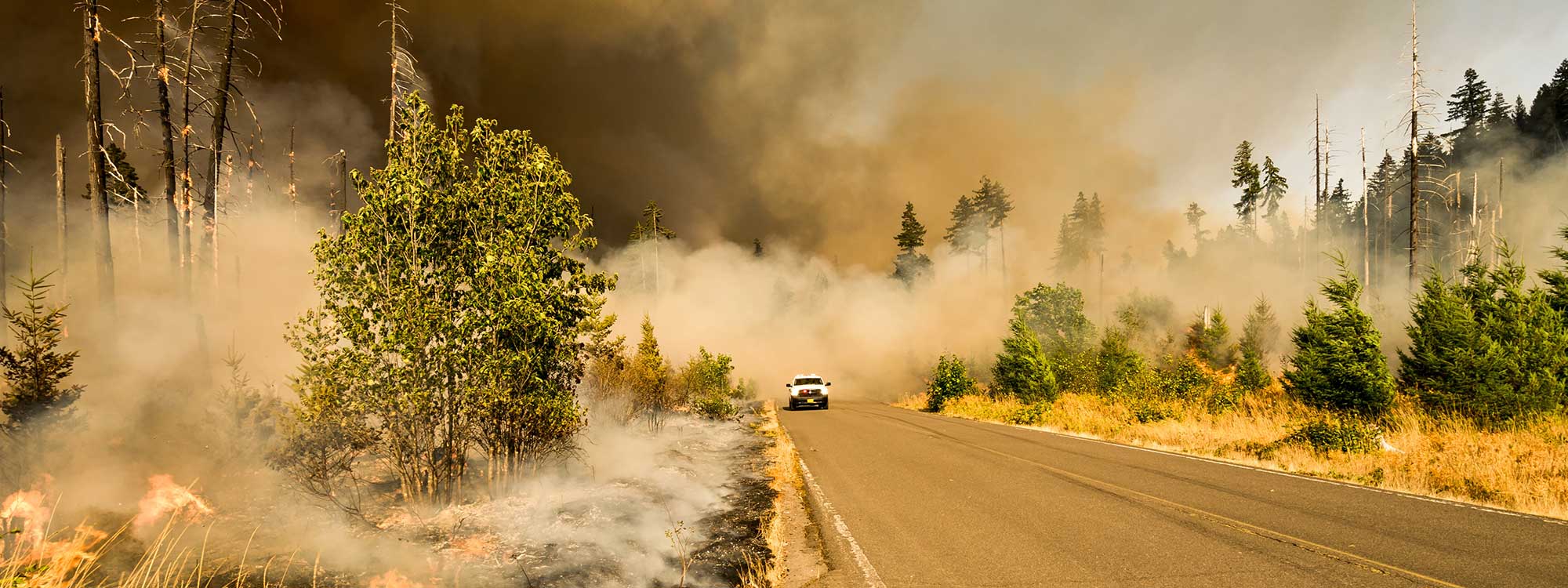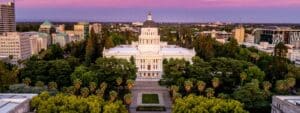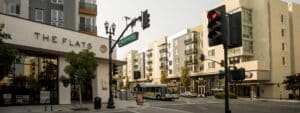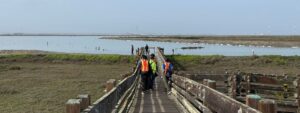When wildfires force people to flee their homes, they must depend on reliable and accessible roads to lead them to safety. To protect lives and homes, firefighters must be able to maneuver large fire trucks and equipment on these same roads. When the roads twist and are narrow and there is only one way out, tragedy can strike. Evacuees get caught in traffic jams and firefighters can’t get there fast enough. California roads are not designed for massive wildfire evacuation.
As the loss of life and home to wildfires has escalated due to the climate crisis, the safety of roads and the number of homes and people who live in high fire risk areas is under scrutiny like never before. That’s why over the next year the State of California is revisiting and revising decades-old regulations that set standards for fire-safe roads and the homes and businesses they serve in high-risk fire areas.
To help achieve more fire-safe roads and wildfire resilience across the state, Greenbelt Alliance is weighing in on the updating of regulations that govern roads and new development in fire-prone lands mapped as “State Responsibility Areas” (SRA) by CalFire. An estimated 2.7 million Californians live in what CalFire designates as “Very High Fire Hazard Severity Zones”. These lands are also known as the wildland-urban interface.
CalFire sets standards for things like road grades, road surfaces, passing areas, gates, signage on dead-ends and “critical” secondary access to any subdivision. The standards provide for rebuilding of homes that burned down while requiring that they meet the latest fire-safe construction methods. The fire-safe-roads revisions will apply primarily to new development.
Greenbelt Alliance was alarmed to learn that CalFire is considering weakening the fire-safe road standards to exempt thousands of miles of rural roads across the state from meeting the baseline and to allow new houses and businesses to be built along these roads.
Recently CalFire’s governing body, the State Board of Forestry, exempted new Accessory Dwelling Units (ADUs) in high fire risk areas from meeting fire-safe construction standards, citing the need for affordable housing. State housing needs will not be solved by putting more people in harm’s way in the wildland-urban interface. Exempting any type of new development in the wildland-urban interface from fire-safe road regulations will only increase wildfire risk. Instead, new ADUs should only be allowed if the roads meet fire-safe standards and are adjacent to fire-hardened homes.
The County of Sonoma is requesting that ALL existing roads in the rural high-fire risk areas of the county be exempted from fire-safe road standards to make it easier for new development. The county has hundreds of miles of old dilapidated roads that are too costly to fix. Allowing more people to build new homes and open new wineries or other enterprises in these areas without meeting basic fire-safe road standards will only put more people in harm’s way, as well as first responders.
The County need not widen every rural road to meet the basic standards, but must ensure that roads are safe and accessible if more development is allowed. All agricultural roads are already exempt. The State Board of Forestry had not yet voted on Sonoma County’s request for a full waiver but asked them to address safety concerns.
Greenbelt Alliance is developing recommendations to CalFire as it updates its fire-safe regulations. A first step we suggest is to map out the lands across the State Responsibility Areas by fire risk level and determine how many new homes, businesses, and ADUs are currently there and how many would be allowed in the future under current land-use policies. From there, we can begin to determine how much new development might be allowed, under what conditions, and at what level of risk.
Greenbelt Alliance is committed to working with CalFire and the Board of Forestry to craft updated fire-safe road standards to protect families and first responders from wildfire tragedies while laying out a plan for long-term wildfire resilience across the Bay Area and our state. We are committed to shaping the policies for how we use our land and grow our cities to be more resilient to wildfire and other climate impacts. Learn more about our suite of policy advocacy initiatives in our Accelerating Climate Resilience Program that will bolster capacity and support local, regional, and state-level efforts to implement equitable, climate-resilient land-use decisions, like fire-safe roads, needed right now.




